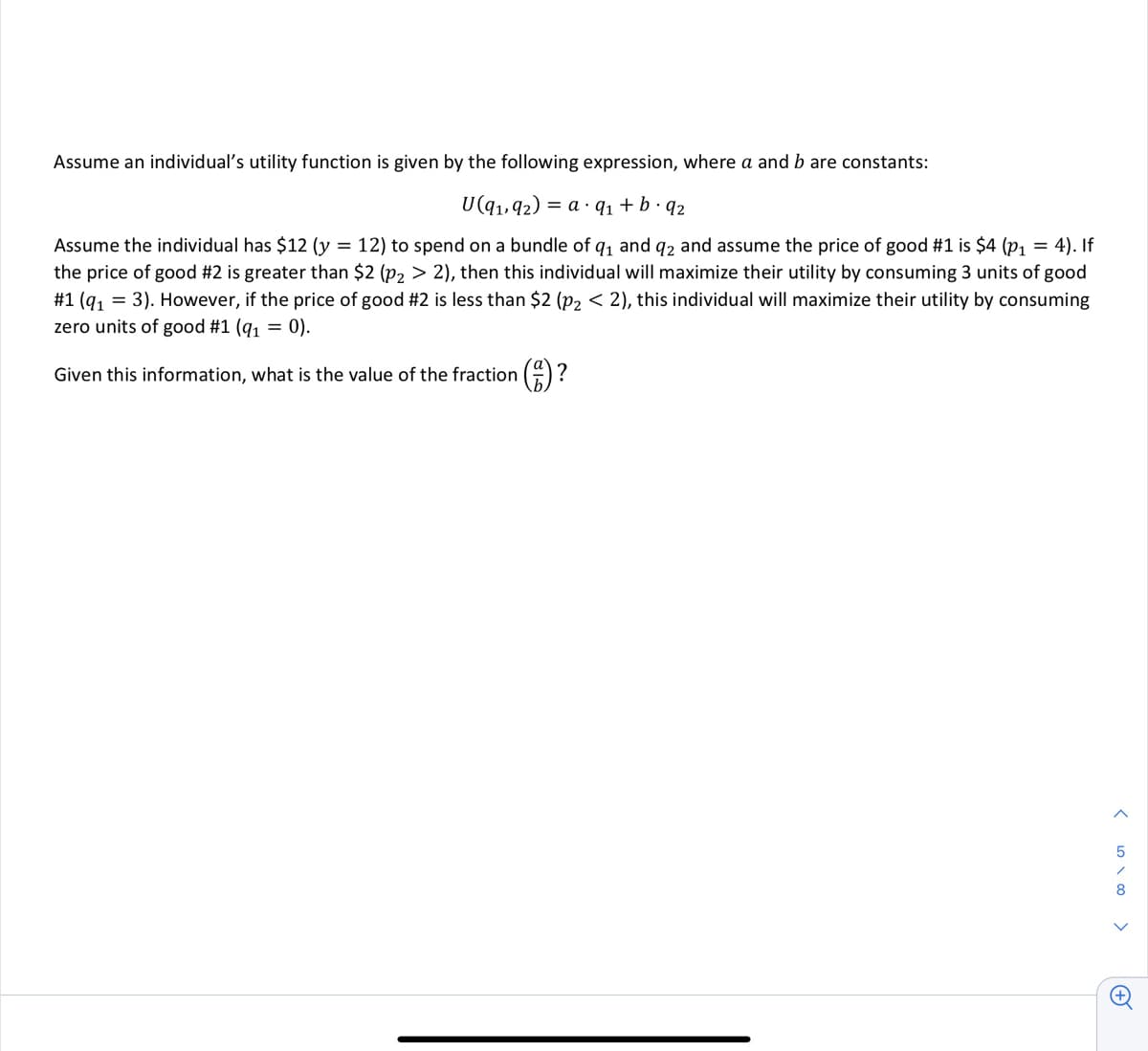Assume an individual's utility function is given by the following expression, where a and b are constants: U(9₁,92) = a q1 + b.q2 Assume the individual has $12 (y = 12) to spend on a bundle of q₁ and q2 and assume the price of good #1 is $4 (p₁ = 4). If the price of good #2 is greater than $2 (p₂ > 2), then this individual will maximize their utility by consuming 3 units of good #1 (9₁ = 3). However, if the price of good #2 is less than $2 (p₂ < 2), this individual will maximize their utility by consuming zero units of good #1 (91 = 0). Given this information, what is the value of the fraction ()?
Assume an individual's utility function is given by the following expression, where a and b are constants: U(9₁,92) = a q1 + b.q2 Assume the individual has $12 (y = 12) to spend on a bundle of q₁ and q2 and assume the price of good #1 is $4 (p₁ = 4). If the price of good #2 is greater than $2 (p₂ > 2), then this individual will maximize their utility by consuming 3 units of good #1 (9₁ = 3). However, if the price of good #2 is less than $2 (p₂ < 2), this individual will maximize their utility by consuming zero units of good #1 (91 = 0). Given this information, what is the value of the fraction ()?
Micro Economics For Today
10th Edition
ISBN:9781337613064
Author:Tucker, Irvin B.
Publisher:Tucker, Irvin B.
Chapter6: Consumer Choice Theory
Section: Chapter Questions
Problem 24SQ
Related questions
Question

Transcribed Image Text:Assume an individual's utility function is given by the following expression, where a and b are constants:
U(91,92) = a q₁ + b .q2
Assume the individual has $12 (y = 12) to spend on a bundle of q₁ and q2 and assume the price of good #1 is $4 (p₁ = 4). If
the price of good #2 is greater than $2 (p₂ > 2), then this individual will maximize their utility by consuming 3 units of good
#1 (9₁3). However, if the price of good #2 is less than $2 (p₂ < 2), this individual will maximize their utility by consuming
zero units of good #1 (91 = 0).
Given this information, what is the value of the fraction ()?
<4000 >
5
8
Expert Solution
This question has been solved!
Explore an expertly crafted, step-by-step solution for a thorough understanding of key concepts.
Step by step
Solved in 4 steps

Knowledge Booster
Learn more about
Need a deep-dive on the concept behind this application? Look no further. Learn more about this topic, economics and related others by exploring similar questions and additional content below.Recommended textbooks for you








Economics (MindTap Course List)
Economics
ISBN:
9781337617383
Author:
Roger A. Arnold
Publisher:
Cengage Learning

Exploring Economics
Economics
ISBN:
9781544336329
Author:
Robert L. Sexton
Publisher:
SAGE Publications, Inc